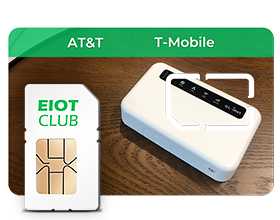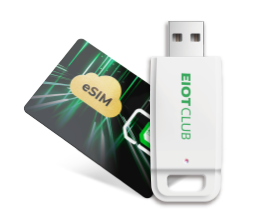Can eSIM Be Hacked or Tracked?

eSIM sounds like a modern magic trick—no plastic, no swapping, just a tap and you're connected. But with every cool tech, comes the question: Is eSIM safe? People worry about hacking, tracking, even cloning. Let's break it down, in plain English, no fluff.
Can eSIM Be Hacked?
The short answer: Yes, but it's complicated.
Any digital system connected to a network can be vulnerable. eSIM is no exception. But hacking it is much harder than hacking a regular SIM card.
Why?
- eSIM is embedded directly into the device. It doesn’t leave your phone or tablet. There's no card to steal, no slot to tamper with. That removes one major attack method used on traditional SIM cards—SIM swapping.
- All eSIM profiles are encrypted. This encryption scrambles the data so anyone trying to intercept it only sees a mess of meaningless symbols.
However, here’s the catch:
- If someone gains access to your device (like through malware or phishing), your eSIM data could be exposed.
- If a hacker compromises the system of your carrier (like in a major data breach), they might be able to manipulate the eSIM remotely.
So, is eSIM bulletproof? No. But it’s not easy to break either. It just shifts the battlefield—from hardware theft to digital intrusion.
Can eSIM Be Tracked?
Tracking is less about the card, more about the device.
Yes, your eSIM can be part of a tracking scenario, just like a physical SIM. Here’s how:
- eSIM connects your device to a mobile network. That network logs your location based on cell tower signals. It’s how all phones work, regardless of SIM type.
- Government agencies or hackers with high-level tools can track location through telecom systems. But this level of access is rare and tightly controlled.
- Apps on your phone might track you more than your eSIM ever will. Location permissions, background services, Bluetooth—those are more likely culprits.
So if privacy is the goal, focus on your device settings, not just the SIM. Turning off GPS, restricting app permissions, and using secure networks will help more than swapping SIM types.
Can eSIM Be Cloned?
Technically, yes. Realistically, extremely rare.
Cloning an eSIM would require:
- Gaining deep access to your device
- Extracting encrypted eSIM profile data
- Bypassing carrier protections
- Installing it into another device in a way that works perfectly
Too many steps. Too many failsafes.
Traditional SIM cards are easier targets for cloning, especially with physical access. eSIM doesn’t allow physical transfer, so it’s not the low-hanging fruit hackers usually look for.
If you're using a prepaid eSIM, even better. There’s less personal data tied to the profile, so the risk is lower from the start.
Is eSIM Less Secure Than a Physical SIM?
Not really. In many ways, it’s the other way around.
Here’s a side-by-side thought:
| Feature | Physical SIM | eSIM |
| Physical Theft Risk | High | None |
| SIM Swapping | Common attack vector | Very difficult |
| Remote Provisioning | No | Yes |
| Profile Locking | Basic | Often tied to device settings |
| Carrier Hijacking | Possible | Still possible (but harder) |
What Are the Potential Security Risks of eSIM
Even though eSIM has a lot of advantages, some risks still exist. Let's go over them clearly:
- Remote profile management misuse
- eSIM allows remote updates and carrier changes
- A compromised system might allow unauthorized changes
- Carrier-level breaches
- If the eSIM platform is hacked at the carrier side, attackers may access data or services
- Phishing attacks
- Hackers can trick users into clicking harmful links that steal eSIM information
- Device-level malware
- Malware inside your phone can access eSIM data if permissions are weak
- Unsecured public Wi-Fi
- Public networks may leak data or open doors for man-in-the-middle attacks
None of these risks are exclusive to eSIM. But eSIM shifts the focus away from hardware to cloud systems and software protection.
Tips on Securing Your eSIM
Once you’ve got an eSIM, the job isn't done. Just like your wallet or house keys, your digital identity needs protection. Here’s how to lock down your eSIM the smart way:
- A locked screen is your first defense. Avoid easy combinations like “1234” or your birthday.
- Updates often patch security holes. Outdated systems are easier to attack.
- Some apps look useful but carry hidden threats. Stick to official app stores.
- Phishing is still one of the most effective attack tools. Be careful what you tap.
- If your phone is lost or stolen, you can erase data remotely using services like Find My iPhone or Google Find My Device.
- Public Wi-Fi might be free, but it’s often not safe. Use a VPN if you must connect outside trusted environments.
- Some carriers allow eSIM lock options. If available, set up a PIN or lock to prevent unauthorized changes.
These actions don’t require tech skills. They're small habits that protect a powerful tool in your pocket.
Switch Smart—Enjoy Safe, Seamless eSIM Use
eSIM isn’t unsafe—it’s just new. And with anything new, questions pop up. Is eSIM safe? For most people, yes. Just treat your device like a digital wallet. Lock it. Watch what you download. And if you go prepaid, that extra layer of anonymity gives you even more peace of mind.

























 Black Friday
Black Friday






